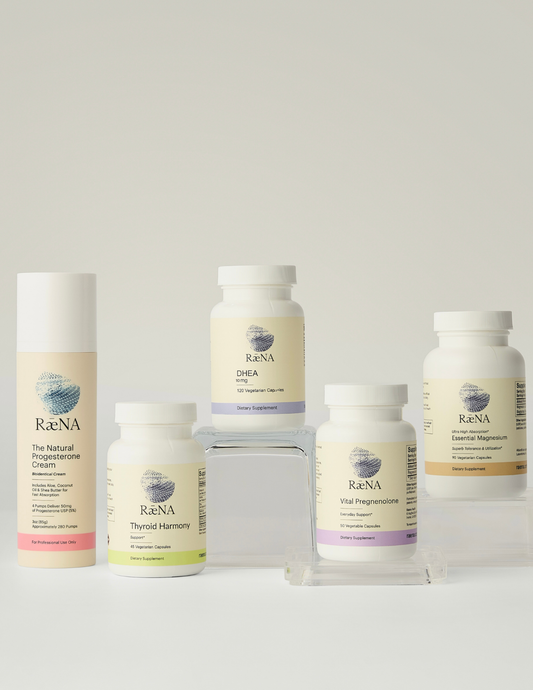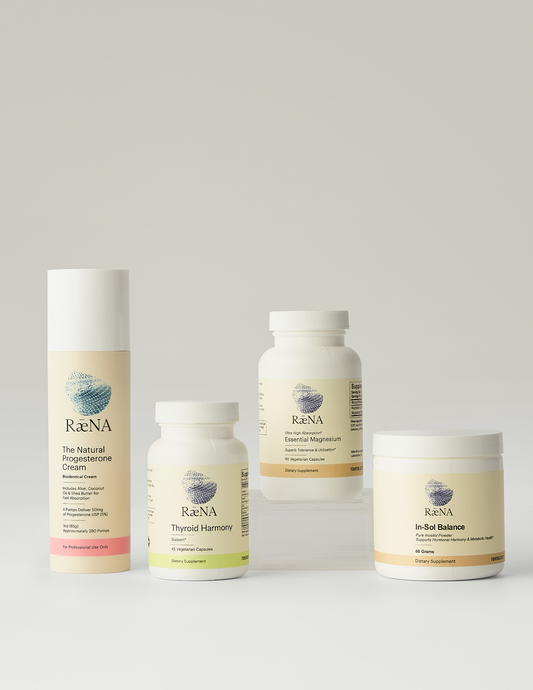
Varicose veins: Causes and solutions
RaenaWhat are varicose veins?
Varicose veins are twisted, enlarged veins that usually affect the legs because standing and walking increase the pressure in the veins of the lower body.
Blood from the legs should pump towards the heart, but if the valves weaken or are damaged, the blood can flow backward and collect in the vein, eventually causing it to be swollen.
Varicose veins are usually benign, but they can be painful and may point to an underlying issue.
Many different factors can influence varicose veins including:
-
Age
-
Pregnancy
-
Blood pressure
-
Inflammation
-
Indigestion
-
Malnutrition
-
Hormones
-
Weight
-
Genetics
-
Liver congestion
A symptom like varicose veins may be a clue to look deeper into the body and understand what might be going on.
Elevated serum estradiol may play a role
High serum levels of estradiol are associated with clinical evidence of varicose veins. One study showed estradiol values greater than 9.7 pg/mL have a significant excess risk of poor peripheral venous wall condition in menopause.
Both BMI and insulin were correlated with the presence of varicose veins in the data; serum estradiol levels correlated strongly and positively with BMI and also with insulin serum levels.
Estradiol/Testosterone ratio may play a role
The estradiol to testosterone ratio may be important in understanding varicose veins.
“…About 21 symptomatic varicose men (VM)…”
What to consider to be proactive about varicose veins?
-
Consider working with Raena to balance hormones. Since estrogen is believed to contribute to varicose veins, it makes sense to test your hormones and provide support if needed. One study showed estradiol values greater than 9.7 pg/mL have a significant excess risk of poor peripheral venous wall condition in menopause. Both BMI and insulin were correlated with the presence of varicose veins in the data; serum estradiol levels correlated strongly and positively with BMI and also with insulin serum levels. Topical hormones like progesterone applied directly to the skin are a common treatment.
-
Reduce inflammation. Studies show blood withdrawn from the site of the varicose vein appears to have significantly increased concentrations of interleukin-6, fibrinogen, and hemoglobin when compared to the same patient’s antecubital blood sample, supporting the hypothesis that inflammation is increased in tissues drained by varicose veins. Understanding and addressing inflammation is key to solving varicose veins.
-
Eat zinc- and copper-rich foods. According to the Center for Vein Restoration, “More than just a precious metal, copper is an essential nutrient that strengthens the skeletal system, stabilizes the immune system, and promotes circulation. A copper deficiency can make the veins less elastic, gradually weakening them and leaving them susceptible to swelling.”
To learn about solving varicose veins, head to www.raenahealth.com!
DISCLAIMER
This content is strictly the opinion of Raena and is for informational and educational purposes only. It is not intended to provide medical advice or to take the place of medical advice or treatment from a personal physician. All viewers of this content are advised to consult their doctors or qualified health professionals regarding specific health questions. Neither Raena nor the publisher of this content takes responsibility for possible health consequences of any person or persons reading or following the information in this educational content. All viewers of this content, especially those taking prescription or over-the-counter medications, should consult their physicians before beginning any nutrition, supplement, or lifestyle program.


